How fast is your website?
You might think your website is fast — but how fast is fast enough? You may be surprised that 47% of Internet users expect web pages to load in two seconds or less and they mean it: 40% of people will abandon websites that don’t load within three seconds.
That’s right. A second could cost you 40% of your website traffic.
To put that number into perspective, we’ll go through a hypothetical example. Let’s say your website has 1,000 unique visitors per week. You have a 5% conversion rate (which is generous, considering the average global conversion rate for an ecommerce website is 2.86%), and your average order value is $100.
This translates to $5,000 per week and $260,000 per year. Not bad, right?
But if your website took longer than 3 seconds to load, you’d lose 40% of that traffic, and you’d actually earn $104,000 less than that.
Let’s look at the other way. Imagine you have that same website: 1,000 unique visitors per week, a 5% conversion rate, but your load time is 3 seconds. If you improved your load time, you might capture 40% more visitors. If everything stayed the same, you’d suddenly have 1,667 visitors (since you’d originally had that many but 40% jumped ship when they didn’t want to wait). If they still convert at 5%, then that means you’re making an additional $3,335 in sales per week, or $173,420 a year in sales you were losing because your load time was too slow.
Depending on your volume, slow loading times could be costing you hundreds of thousands of dollars every year. Here’s something else to consider: of the 40% of visitors who abandon your site, 80% of those people won’t return.
Fortunately, there’s a way for you to speed up your website loading times. What’s the solution? Caching.
What is caching?
Let’s start with the basics. A request to your server is required each time someone visits a page on your site. The server sends those results to the user’s web browser.
On the user’s end, they see your website as the final product. Your website is complete with things like headers, menus, images, videos, blog content, and everything else that makes your site unique.
The server needs to process each request before delivering the final page to the user. Depending on the complexity of your website, sometimes this can take a long time.
That’s where caching comes into the equation. Caching stores recently viewed content, such as a web page, so server requests won’t be as in depth.
Here’s a visual representation of what caching looks like.
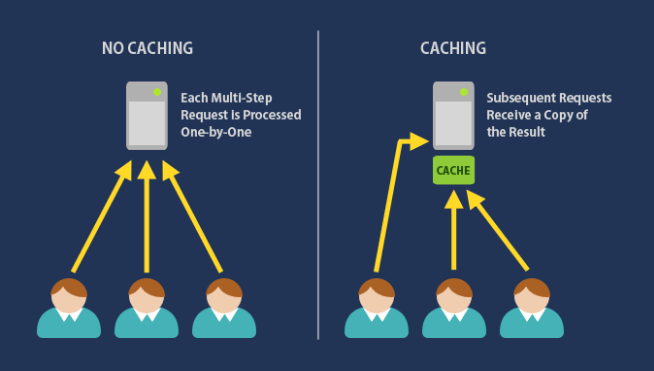
Simply put, caching means less work is required for pages to be viewed on your website. As a result, your site will load much faster.
Why do you need a WordPress caching plugin?
Without a WordPress caching plugin, requests for every element of your website need to be made to the server each time someone visits your site, even if they’ve seen the content before.
A caching plugin will:
- Speed up your website
- Increase the user experience
- Reduce the strain on your server
- Improve SEO
- Lower your TTFB (time to first byte)
Caching plugins will generate a static HTML page of your site, which will be saved on your server. Whenever someone visits your site, the plugin will display the lighter HTML version as opposed to the heavy PHP scripts.
There are tons of caching plugins out there that claim to speed up your website. How can you possibly know which one to install? Truthfully, it’s nearly impossible to determine which plugin is the fastest. Depending on the website content, what works for one site may not work as well for another. With that said, there are definitely certain caching plugins that stand above the rest. I took the time to identify the best WordPress cache plugins for you to consider.
1. W3 Total Cache
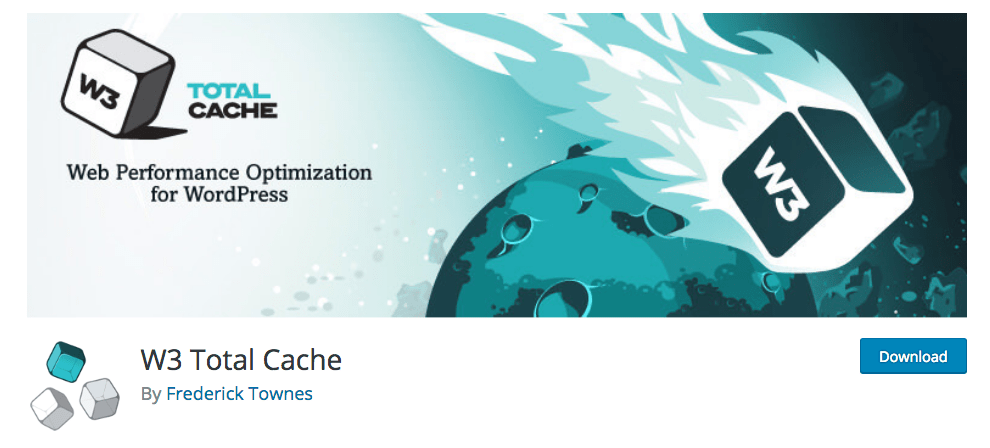
With more than one million active installs, W3 Total Cache is one of the most popular WordPress cache plugins on the market.
W3 Total Cache is an open-source plugin, which is completely free to use. A free install gives you access to all of the features, and you won’t be pitched any upsells after the fact.
I included this on my list of best WordPress cache plugins because it offers minifications that save bandwidth, HTTP compression, as well as feed optimization.
This plugin works for both mobile and desktop versions of your website. W3 Total Cache integrates with your website’s CDN. It’s also helpful for sites with SSL certificates, making it a top choice for ecommerce websites.
You should keep in mind that W3 Total Cache can be a bit complex to use. Even though it’s a popular choice, it may not be the best option for WordPress beginners. There are 16 pages in the settings section of this plugin, for example. However, you won’t have to manually configure all of these options. The default settings work well right out of the box. So unless you’re a developer who has lots of experience with these options, I’d recommend sticking to the defaults.
If you want that type of added customization, there is a separate setting for each type of caching. You can have different settings for things like:
- Object caching
- Page caching
- Browser caching
- Database caching
The list goes on and on. It’s tough to find this type of in-depth customization for free on other WordPress cache plugins.
2. WP Rocket
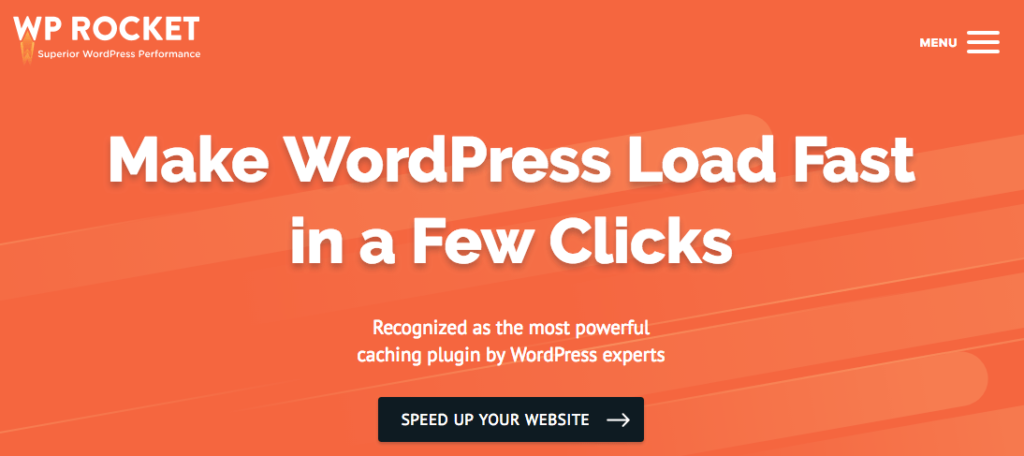
WP Rocket has the simplest design of all cache plugins for WordPress. You won’t have any problems installing this plugin and getting it set up quickly. The overall simplicity of WP Rocket is what makes it one of the best WordPress cache plugins, which is why it’s great for beginners.
With that said, WP Rocket also has advanced settings that can be customized by developers or site owners who have a bit more technical knowledge.
Pricing starts at $49 per year for one website. WP Rocket also has a developer plan that’s $249 annually for unlimited sites.
I know what some of you are thinking, Why should I pay for this when there are so many free WordPress cache plugins available?
Simply put, you get what you pay for. For $50 per year, I’d rather have a plugin with an easy setup and smooth interface. Plus, WP Rocket comes with extra features that you won’t find in free cache plugins. It indexes your website on search engines to help improve your SEO ranking and all JavaScript, HTML, and CSS files get minified to boost page loading speed. Another benefit of this plugin is the “images on request” feature. This means that images only get loaded when they are visible on the screen. So if you have pages with lots of images deeper in the scroll, they won’t be loaded initially. This dramatically improves your loading time. This plugin also helps optimize your Google Fonts, which is something that’s not offered by most cache plugins I’ve used.
Overall, WP Rocket is one of the best WordPress cache plugins for beginners and experienced developers alike.
3. WP Super Cache
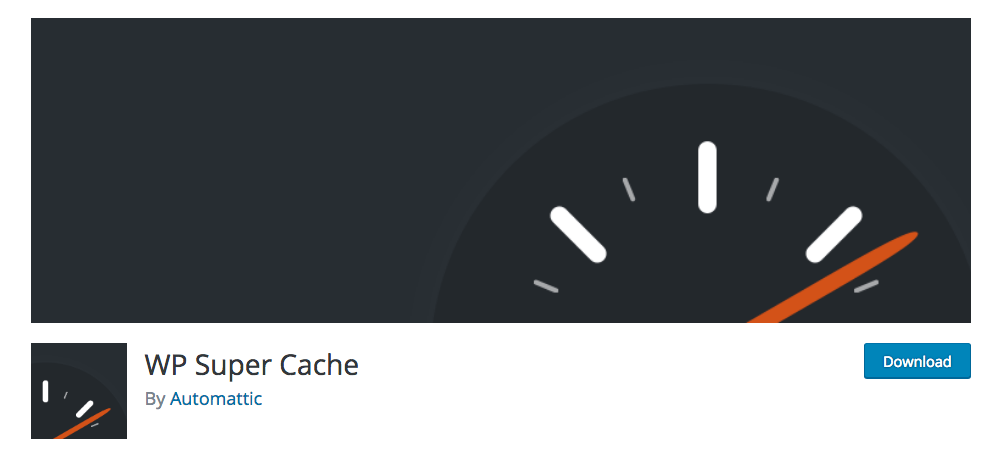
WP Super Cache has more than two million active installations. I’m not saying you should always follow what other people are doing, but numbers this high are usually a pretty good indication of quality.
This plugin is completely free as well. So it’s a great option if you’re hesitant about spending money on a WordPress plugin.
WP Super Cache creates static HTML files and displays them instead of heavier PHP scripts. The plugin offers three different modes of caching:
- Simple
- Expert
- WP-cache caching
Most of you can get away with using simple mode. You’ll need a custom permalink, but this option is much easier to configure and doesn’t require you to change your .htaccess file. The majority of web pages will still be dynamic in simple caching mode.
As you might have guessed, expert mode is a bit more complex. Unless you’re experienced with coding and web development, I would not recommend this setting to you. It requires an Apache mod_rewrite module as well as modifications to your .htaccess file. If you don’t know what you’re doing, improper modifications of these files can be detrimental to your website.
WP-cache caching mode is used to cache content for known website visitors. This is ideal for those of you who have users who are logged in, leave comments, or need to be shown custom content.
If you don’t want to things to get too complicated, you can always just stick with simple mode, but the fact that WP Super Cache has so many other options makes it one of the best WordPress caching plugins.
4. Hyper Cache
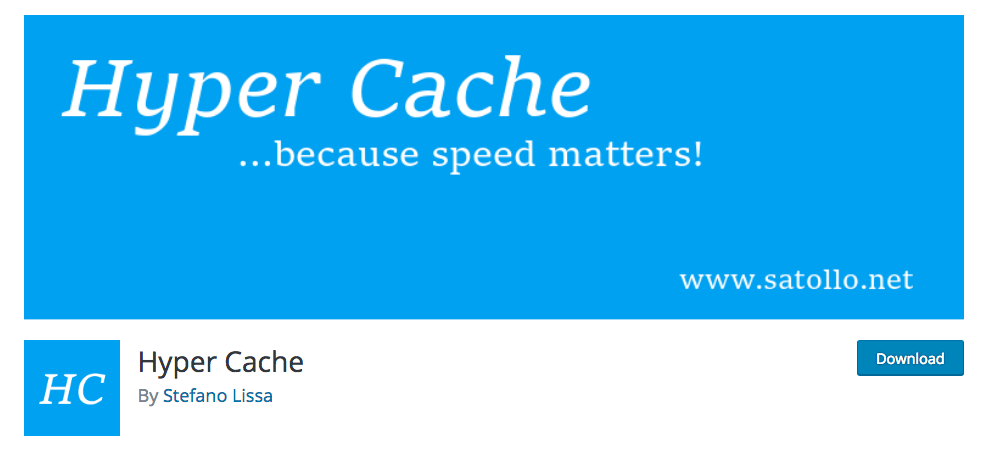
Hyper Cache was designed with WordPress blogs in mind. It will work on every blog, without any complex configurations. Hyper Cache optimizes your bandwidth and ultimately boosts the page loading speed of your WordPress blog.
You can install Hyper Cache with ease and the process is very fast. I’d say this is one of the best WordPress cache plugins for users who are beginners and don’t want to manage tons of different cache settings. With this plugin, you can implement the “set it and forget it” mentality. So once you have it installed, you don’t have to do much of anything after the initial configuration.
You’ll notice that some of the settings may have some odd names that you’re unfamiliar with but Hyper Cache comes provides recommendations and detailed information about which should be activated and how each setting impacts your website.
Like some of the other options on our list, Hyper Cache is free. It offers CDN support and has mobile-friendly caching as well. It’s a great tool to have for those of you who have blogs with lots of comments.
Something that I found interesting about Hyper Cache is the way that this plugin completes website backups. The cache folders aren’t included in your backups, meaning the backup files will be smaller and save you space.
While this plugin should be a top consideration for WordPress bloggers, I wouldn’t recommend it for more complex sites, such as ecommerce platforms. If you fall into that category, you’d be better off with a more advanced plugin from this list.
5. Comet Cache

Comet Cache has a quick and easy installation process. Once installed, you’ll find that the navigation on the dashboard is extremely user friendly.
I like this plugin because it’s so informative. You’ll find tons of resources that will tell you everything there is to know about caching. This will help you configure the settings to optimize the performance of your own WordPress site.
You’ll have plenty of different options for caching with Comet Cache:
- Pages
- Posts
- Tags
- Categories
If you’re looking for simple customization, this plugin is definitely one that you should consider. The ability to cache users who are logged in makes Comet Cache a top option for membership websites.
Comet Cache has both free and paid versions. Most of you can probably get away with the free WordPress plugin, but the paid upgrades offer better features. If you upgrade your plugin, you’ll have the option for automatic and intelligent cache clearing. Basically, this feature allows you to configure all of your settings from the beginning, and then have a “hands-free” approach moving forward.
Conclusion
Installing a WordPress cache plugin will boost your website speed and improve the user experience. Now that we’ve established why caching plugins are important, the question becomes, Which is the best WordPress cache plugin?
It depends what you’re looking for. Some plugins are designed for ecommerce websites, while others are intended for WordPress blogs. Some cache plugins are made for beginners, while others have more complex settings for advanced developers.
Do you want a free WordPress cache plugin? Or are you looking for a paid version?
Based on all of this information, I narrowed down my list to the top five options to consider. There is something for everyone on this list, based on the type of website you have, your technical experience, and the type of settings you want to apply. Use this guide as a reference to help you find the best WordPress cache plugin for your website.

Source Quick Sprout http://bit.ly/2RXdUlx












